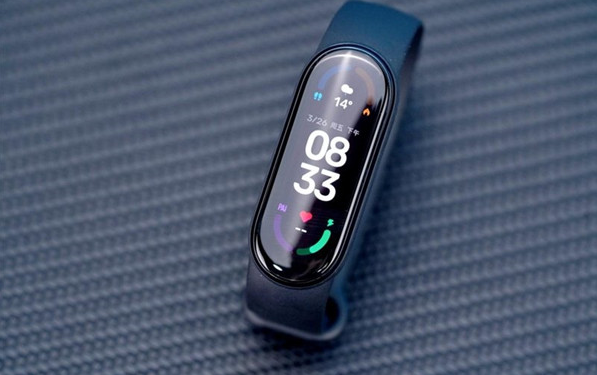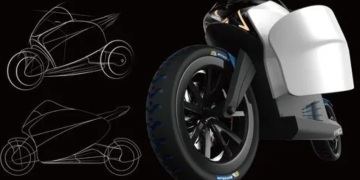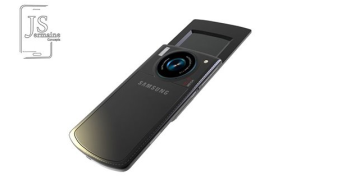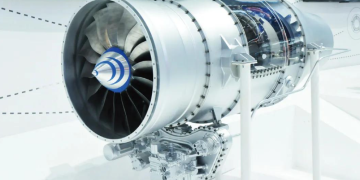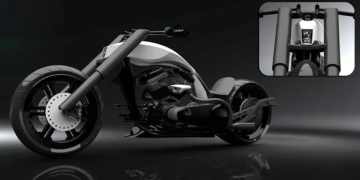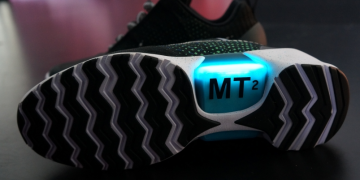In the world of photography, the journey from a beginner’s point-and-shoot camera to a professional-grade setup is both exciting and rewarding. As you grow and develop your skills as a photographer, upgrading your digital camera setup becomes a natural progression, allowing you to unlock new creative possibilities and capture stunning images. Let’s explore the steps involved in making the transition from a basic camera setup to a professional-grade rig that meets your evolving needs and aspirations.
Introduction
Upgrading your digital camera setup is a significant milestone in your journey as a photographer. Whether you’re a hobbyist looking to take your passion to the next level or a professional seeking to expand your creative horizons, investing in new equipment can open up a world of possibilities and enhance your photographic experience. From choosing the right camera to mastering advanced features, upgrading your setup is an exciting and rewarding endeavor that can elevate your photography to new heights.
Assessing Your Current Setup
Before embarking on the journey of upgrading your digital camera setup, it’s essential to take stock of your current equipment and evaluate its performance and capabilities. Assessing your current setup allows you to identify any limitations or shortcomings that may be holding you back and determine the areas where you can make improvements.
Evaluating Your Current Camera and Equipment
Take a close look at your current camera body, lenses, and accessories, and assess their performance, functionality, and suitability for your needs. Consider factors such as image quality, autofocus speed, low-light performance, and ergonomics. Identify any features or capabilities that are lacking or could be improved upon, such as resolution, dynamic range, or connectivity options.
Identifying Limitations and Areas for Improvement
Based on your assessment, identify the specific limitations or areas for improvement in your current setup. This could include issues such as limited resolution, slow autofocus, poor low-light performance, or inadequate lens selection. By pinpointing these areas, you can prioritize your upgrades and focus on addressing the most critical needs first.
Choosing the Right Camera
Selecting the right camera is perhaps the most crucial step in upgrading your digital camera setup. With a wide range of options available on the market, choosing the perfect camera can be daunting, but by considering your specific needs and preferences, you can find a camera that meets your requirements and fits your shooting style.
Factors to Consider When Upgrading Your Camera
When choosing a new camera, consider factors such as sensor size, resolution, autofocus system, burst rate, and video capabilities. Think about the types of photography you enjoy most and the features you need to capture the images you envision. Whether you’re interested in landscape photography, portraiture, sports, or videography, there’s a camera out there that’s tailored to your needs.
Understanding Different Camera Types and Features
Digital cameras come in various types and configurations, from compact point-and-shoots to advanced mirrorless and DSLR cameras. Each type offers its advantages and disadvantages, depending on your shooting style and preferences. Mirrorless cameras, for example, are known for their compact size, fast autofocus, and electronic viewfinders, while DSLRs offer superior battery life, optical viewfinders, and a wide selection of lenses.
Selecting Lenses for Your Needs
In addition to upgrading your camera body, investing in quality lenses is essential for achieving the best possible image quality and creative flexibility. Lenses are the eyes of your camera, and choosing the right ones for your needs can make a significant difference in the quality and impact of your photographs.
Importance of Lenses in Photography
Lenses play a crucial role in shaping the look and feel of your images, influencing factors such as sharpness, depth of field, and perspective. Whether you’re capturing sweeping landscapes, intimate portraits, or fast-moving action, the right lens can make all the difference in achieving your desired results.
Choosing the Right Lenses for Your Shooting Style
When selecting lenses for your digital camera setup, consider factors such as focal length, aperture, and optical quality. Prime lenses offer superior image quality and low-light performance, while zoom lenses provide versatility and convenience. Consider investing in a range of focal lengths to cover various shooting scenarios, from wide-angle to telephoto, and prioritize lenses with fast apertures for low-light and creative photography.
Exploring Advanced Features
As you upgrade your digital camera setup, you’ll gain access to a host of advanced features and settings that can enhance your creative capabilities and expand your photographic horizons. From manual exposure controls to advanced autofocus systems, mastering these features will allow you to take full control of your camera and achieve the precise results you desire.
Understanding Advanced Camera Settings and Features
Take the time to familiarize yourself with the advanced settings and features of your new camera, such as manual exposure modes, exposure compensation, white balance controls, and custom functions. Experiment with different shooting modes and techniques to gain a deeper understanding of how your camera responds to different lighting conditions and subjects.
Expanding Your Creative Possibilities
With advanced features such as in-camera HDR, multiple exposure blending, and focus stacking, modern digital cameras offer a wealth of creative tools and techniques for capturing unique and compelling images. Explore these features and experiment with new shooting techniques to push the boundaries of your creativity and express your unique vision.
Investing in Quality Accessories
In addition to upgrading your camera body and lenses, investing in quality accessories is essential for maximizing the functionality and versatility of your digital camera setup. From tripods and filters to flashes and remote triggers, the right accessories can help you tackle a wide range of shooting scenarios and achieve professional-quality results.
Essential Accessories to Complement Your Camera Setup
Consider the types of photography you enjoy most and invest in accessories that will enhance your shooting experience and expand your creative possibilities. A sturdy tripod, for example, is essential for capturing sharp, blur-free images in low light or long-exposure situations, while a polarizing filter can help reduce glare and enhance color saturation in landscape photography.
Maximizing the Functionality and Versatility of Your Gear
Choose accessories that complement your camera setup and allow you to tackle a wide range of shooting scenarios with confidence and ease. Whether you’re shooting landscapes, portraits, or sports, the right accessories can help you overcome challenges and capture stunning images in any situation. Experiment with different accessories and techniques to discover what works best for you and your photography style.
Learning and Skill Development
As you upgrade your digital camera setup and explore new features and capabilities, it’s essential to continue learning and developing your skills as a photographer. Photography is a lifelong journey of discovery and growth, and by seeking out opportunities for education and skill development, you can continue to evolve as an artist and refine your craft.
Importance of Continuous Learning in Photography
Photography is a dynamic and ever-evolving art form, with new technologies, techniques, and trends emerging constantly. By staying curious and open-minded and seeking out opportunities for learning and skill development, you can stay ahead of the curve and remain relevant in an increasingly competitive industry.
Resources for Improving Your Skills and Knowledge
Take advantage of the wealth of resources available for learning and skill development in photography, from online tutorials and courses to workshops, seminars, and photography clubs. Join online communities and forums to connect with fellow photographers, share knowledge and experiences, and seek feedback and guidance on your work. Invest in books, magazines, and instructional videos to expand your knowledge and inspire your creativity.
Budgeting and Financial Considerations
Upgrading your digital camera setup is a significant investment, so it’s essential to set a budget and make informed decisions about where to allocate your resources. By carefully considering your needs and priorities and finding the best value for your investment, you can build a camera setup that meets your requirements without breaking the bank.
Setting a Budget for Upgrading Your Camera Setup
Determine how much you’re willing and able to spend on upgrading your digital camera setup and allocate your budget accordingly. Consider the cost of the camera body, lenses, and accessories you need, as well as any additional expenses such as memory cards, batteries, and storage solutions. Be realistic about your budget and prioritize your purchases based on your specific needs and goals.
Finding the Best Value for Your Investment
When shopping for new camera equipment, it’s essential to do your research and compare options to find the best value for your investment. Consider factors such as build quality, performance, features, and customer reviews when evaluating different products. Look for discounts, promotions, and bundled deals to maximize your savings and get the most bang for your buck.
Making the Transition
Transitioning to a new digital camera setup can be an exciting but challenging process, as you adapt to new equipment and features and adjust to changes in your workflow and shooting style. By taking a systematic approach and allowing yourself time to acclimate to your new gear, you can make the transition smoother and more seamless.
Tips for Transitioning to a New Camera Setup
Take the time to familiarize yourself with your new camera body and lenses and experiment with different settings and features to find what works best for you. Practice using your new equipment in various shooting scenarios and environments to gain confidence and proficiency. Don’t be afraid to make mistakes or ask for help if you’re unsure how to use a particular feature or technique.
Adjusting to New Equipment and Features
Be patient and give yourself time to adjust to your new camera setup and features. It’s natural to feel overwhelmed or frustrated at first, but with practice and perseverance, you’ll soon become comfortable and confident with your new gear. Take advantage of online resources, tutorials, and user manuals to learn more about your camera and accessories and explore new techniques and creative possibilities.
Seeking Feedback and Guidance
As you embark on your journey of upgrading your digital camera setup, don’t hesitate to seek feedback and guidance from experienced photographers and fellow enthusiasts. Joining communities and forums, attending workshops and events, and reaching out to mentors and peers can provide invaluable support, advice, and inspiration as you continue to grow and develop as a photographer.
Seeking Advice from Experienced Photographers
Connect with experienced photographers in your local community or online and seek their advice and guidance on upgrading your camera setup. Experienced photographers can offer valuable insights, recommendations, and troubleshooting tips based on their own experiences and expertise. Don’t be afraid to ask questions or seek feedback on your work – most photographers are happy to help and share their knowledge with others.
Joining Communities and Forums for Support and Inspiration
Join online photography communities and forums to connect with fellow photographers, share experiences and ideas, and seek feedback on your work. Participating in discussions, sharing your photos, and engaging with other members can provide valuable support, encouragement, and inspiration as you continue to learn and grow as a photographer. Look for communities that align with your interests and goals and contribute actively to the community to build meaningful connections and relationships.
Maintaining and Caring for Your Gear
Once you’ve upgraded your digital camera setup, it’s essential to take proper care of your equipment to ensure its longevity and performance. Regular maintenance and cleaning can help prevent damage and prolong the lifespan of your gear, allowing you to continue capturing stunning images for years to come.
Importance of Proper Maintenance and Care
Proper maintenance and care are essential for keeping your digital camera setup in top condition and preventing issues such as dust buildup, moisture damage, and mechanical failure. Make it a habit to clean your camera body, lenses, and accessories regularly using the appropriate tools and techniques, and store your gear in a safe, dry place when not in use.
Tips for Prolonging the Lifespan of Your Equipment
Follow manufacturer recommendations and best practices for cleaning, storage, and usage to ensure the longevity and performance of your gear. Use protective cases or bags to shield your equipment from dust, debris, and accidental damage, and avoid exposing your gear to extreme temperatures or humidity. Invest in quality cleaning tools and accessories and learn proper techniques for cleaning sensitive components such as lenses and sensors to prevent damage and maintain optimal performance.
Monitoring Progress and Growth
As you continue to upgrade your digital camera setup and refine your skills as a photographer, it’s essential to monitor your progress and growth over time. Tracking your achievements and milestones can help you stay motivated and inspired and identify areas for further improvement and development.
Tracking Your Progress and Improvement
Keep track of your photography journey by documenting your achievements, milestones, and memorable moments. Create a portfolio or online gallery to showcase your best work and track your progress over time. Set goals and benchmarks for yourself, such as mastering a new technique, completing a personal project, or entering a photography competition, and celebrate your successes along the way.
Celebrating Milestones and Achievements
Take pride in your accomplishments as a photographer and celebrate your milestones and achievements with friends, family, and fellow enthusiasts. Share your work on social media, participate in exhibitions or photo walks, and network with other photographers to gain recognition and exposure for your talent and creativity. Remember to stay humble and open-minded and continue pushing yourself to new heights in your photography journey.
Conclusion
Upgrading your digital camera setup is an exciting and rewarding journey that allows you to unlock new creative possibilities and take your photography to the next level. By assessing your current setup, choosing the right camera and lenses, exploring advanced features, and investing in quality accessories, you can build a camera setup that meets your needs and helps you achieve your artistic vision. Remember to continue learning and developing your skills, seek feedback and guidance from experienced photographers, and take proper care of your gear to ensure its longevity and performance. With dedication, passion, and perseverance, you can elevate your photography to new heights and capture stunning images that tell your unique story.

FAQs After The Conclusion
- How do I know if it’s time to upgrade my digital camera setup? If you find yourself limited by the capabilities of your current camera or feel that your gear is holding you back from achieving your creative vision, it may be time to consider upgrading your digital camera setup.
- What factors should I consider when choosing a new camera? When choosing a new camera, consider factors such as sensor size, resolution, autofocus performance, video capabilities, and ergonomics, as well as your specific needs and shooting preferences.
- How can I afford to upgrade my camera setup on a limited budget? Look for deals, promotions, and discounts on camera bodies, lenses, and accessories, and consider buying used or refurbished equipment to save money without sacrificing quality.
- What are some essential accessories to complement my camera setup? Essential accessories for a digital camera setup include a sturdy tripod, a selection of high-quality lenses, a camera bag or case, extra batteries and memory cards, and lens filters for creative effects.
- How can I continue to develop my skills as a photographer after upgrading my camera setup? Continue learning and growing as a photographer by experimenting with new techniques and shooting styles, seeking feedback and guidance from experienced photographers, and participating in workshops, courses, and photography events.
- What should I do if I encounter problems with my new camera setup? If you encounter issues with your new camera setup, refer to the user manual or online resources for troubleshooting tips, and don’t hesitate to contact the manufacturer’s customer support or seek assistance from a qualified technician if needed.
- How can I ensure the longevity and performance of my new camera setup? Take proper care of your camera and accessories by cleaning them regularly, storing them in a safe, dry place, and following manufacturer recommendations for maintenance and usage.
- What are some signs that I may need to upgrade my camera setup again in the future? Signs that you may need to upgrade your camera setup again in the future include feeling limited by the capabilities of your current gear, changes in your photography needs or preferences, or significant advancements in camera technology that offer substantial benefits over your current equipment.



